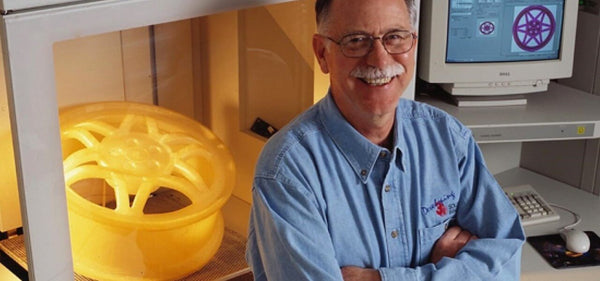Although 3d printing has been around more than 20 years, it still has often been misunderstood, both positively and negatively. I have seen quite a lot of hype which has been based around misconception.
In this article, we will take a look at our pick for the top 7 myths and misconceptions about 3d printing, such as the age of technology, what 3d printer capable and what not, 3d printer price, etc.
Myth 1: 3D printing has only been around a few years

3D printing as technology has actually been around since early 1980, Hideo Kodama of Nagoya Municipal Industrial Research Institute invented two additive methods for fabricating three-dimensional plastic models with photo-hardening thermoset polymer, where the UV exposure area is controlled by a mask pattern or a scanning fiber transmitter. Find out more details about 3d printer history here.
Myth 2: 3D printer can print anything you can imagine
While 3d printing technology is hugely empowering, but there are still very clear limitations to what you can actually print.
For instance, we can print multi-materials very well, and technology that produces full-color models are still quite expensive or fragile.
Myth 3: 3D printer are difficult to operate
That was true in the past. Back in days, printers for manufacturing purposes often have unintuitive software, it requires printer has expert knowledge including part design, machine setting, and part orientation, etc.
Nowadays, most companies produce integrated purpose build hardware and software, you can find out a lot of 3d printers that is for a complete beginner on the market today. You can install a 3d printer within 30 minutes, download a 3d model from Thingiverse for free, put the file into slicing software such as Cura or Simplify 3d, then you can start to print your model.
Myth 4: “Plastic 3D printing material cannot be used in a manufacturing environment
Many 3d printers used printing plastics unsuitable for a manufacturing environment. They do not only make weaker parts, but the pars are also not durable enough or chemically resistant.
In recent years, 3d printers have created machines capable of printing robust materials. The additional of composites such as continuous carbon fiber has introduced the ability for customers to print parts that are as strong as 6061 aluminum.
Myth5: 3D printer is expensive

Yes, just a few ago, 3d printer was still very costly, you have to spend at least a few thousand dollars to get something that would print at least semi-reliable.
Similar to other high tech product, the price always drops rapidly as technology becomes better over time and the competition increases every day. Today, you can get a reliable 3d printer under $300 with a basic function for a home user.
For more information, visit Aniwaa.com to get most popular 3d printer reviews from the market.
Myth 6: 3D printing will replace traditional manufacturing
I admit that 3d printing technology is getting much better compared with a few years ago, but the cost of producing and time of spending is far greater than traditional manufacturing.
3D printer is preferred to create parts for custom low-volume parts, so a business can avoid the risk that they do not have to invest a large amount of money, effort and time on low-volume parts that may not generate any revenue.
3D printing is not cheap and fast enough to replace processes like injection molding or casting, it will most likely become a supplement of traditional manufacturing instead of replacing.
Myth 7: 3d printer can print a fully functioning organs
That only happens in the movie. It is possible to create replacement organs or assisting the body with repairing damaged organs, in fact, 3d printing had been using widely in medical purpose for the past year.
However, until today, it is still impossible to duplicate real human tissue or create functioning organs. These applications require far more complex technologies that still need to be developed.
























